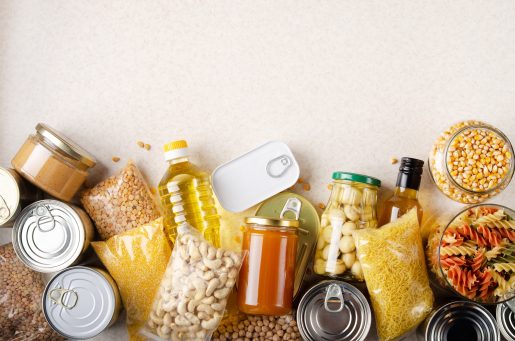What healthy foods should you have in your home during hurricane season?
 It’s hurricane season, and while you are stocking up on storm supplies, make sure you are also picking up healthy food items to have on hand in preparation for a natural disaster. Dr. Luis Rustveld, registered dietitian and associate professor at Baylor College of Medicine, shares what foods are best to have in your home.
It’s hurricane season, and while you are stocking up on storm supplies, make sure you are also picking up healthy food items to have on hand in preparation for a natural disaster. Dr. Luis Rustveld, registered dietitian and associate professor at Baylor College of Medicine, shares what foods are best to have in your home.
First, Rustveld says to think about what a balanced plate would look like without the availability of fresh foods during a hurricane. This means having shelf-stable sources of protein, carbohydrates and vegetables to ensure that your meals remain nutritious and well-balanced even in emergency situations.
“You have to think about what foods are shelf-stable so that you don’t risk getting food poisoning,” Rustveld said.
For protein, examples of good shelf-stable items are:
- Beef jerky
- Tuna – canned or in pouches
- Sardines
- Canned beans
- Snack bags of edamame
- Peanut butter, almond butter and any other kind of nut butter
“Nuts and seeds can add additional protein and healthy fats,” Rustveld said. “You’ll also need carbohydrates for energy because during this time, even though, you will most likely not be as physically active, you may still exert yourself during an evacuation or clean-up efforts.”
During a hurricane, you will most likely not have any electricity, so you won’t be able to cook foods like rice, pasta or other perishable foods. Healthy carbs to have are:
- Whole-grain crackers
- Rice cakes
- Dry cereal or instant oatmeal packets
- Dried fruit (raisins, apricots, mango)
- Granola bars
- Healthy ready-to-eat popcorn
“You’re thinking of how to create a balanced, healthy plate, without available fresh ingredients. You can also include canned vegetables, canned fruit or fruit cocktail in 100% juice, and dried vegetables like kale chips. For dairy products or protein-rich sources, you can have powdered milk, shelf-stable milk or ready-to-drink protein shakes. Remember, once the protein shake is opened, you cannot leave it unrefrigerated; you have to drink it right away or store it in a cooler,” Rustveld said.
He adds that some cheeses can last up to 1-2 weeks without refrigeration. However, make sure to keep them in a dry and cool place, and keep an eye for signs of spoilage before eating. Look for cheeses that have a wax coating, such as cheddar, gouda, or parmesan. Avoid soft cheeses, like brie or fresh mozzarella, as they spoil quickly without refrigeration.
People with diabetes and celiac disease and hypertension need to maintain their condition through proper management during emergency situations. Natural disasters create additional challenges for people with dietary needs because they disrupt access to medications and refrigeration and regular meals.
“If you have diabetes or high blood pressure, you need to think ahead about how you are going to manage your diet during a natural disaster. Emergency situations can disrupt your routine and limit food choices, but you can help prevent your condition from worsening by planning ahead and making thoughtful food choices. Stock up on shelf-stable foods that meet your dietary needs, such as low-sodium canned vegetables for hypertension, gluten-free snacks and grains for celiac disease and low-glycemic, non-perishable options for diabetes. Don’t forget to include enough safe fluids, especially water, and if you rely on refrigeration for insulin or medications, have a cooler and ice packs ready. A little preparation now can go a long way in keeping your health stable during an emergency,” Rustveld said.
Learn more about Baylor Family Medicine.
By Taylor Barnes




glad to see you offering good food ideas for hurricane/emergencies.